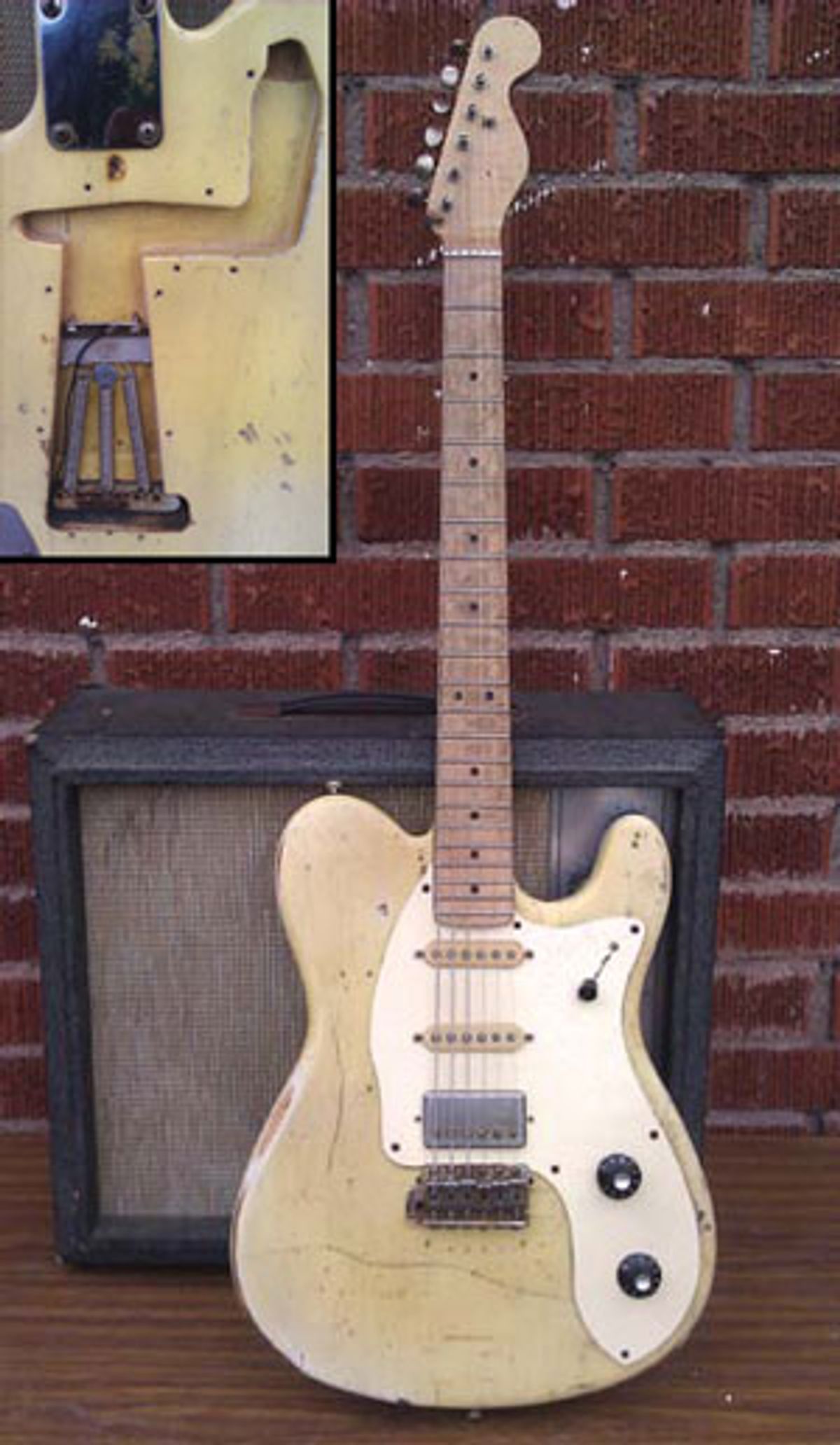
In the case of Leo Fender and G&L, a 1969 Tri-Sonic R&D prototype covered in 20 years of dust, dirt, and grime.
Some of the best seek-and-find gear stories start somberly by someone passing away and their family and friends having to sort through the deceased’s arachnid-filled attic or overflowing garage. This story has already graced PG’s “Guitar of the Month” [“1965 Fender Jazz,” June 2010]. But what do you find in the most heralded guitar builder’s workshop when the head luthier in the sky comes calling? In the case of Leo Fender and G&L, a 1969 Tri-Sonic R&D prototype covered in 20 years of dust, dirt, and grime.
“It was in ’91, one week after Leo’s funeral, and I was cleaning out Leo’s lab when I found it in a small loft just to the left of the front door of his shop,” recalls Gabriel Currie, a G&L employee at the time who was working in the neck department. “I found the slab body and the original templates dated ‘1969,’ and I showed what I had found to the plant foremen John Rodriquez and John McLaren Jr. I asked if I could keep it and they looked at each other and nodded—it was mine and the first thing I thought was, ‘Shit, I have to somehow finish building it and hear how it sounds’ [laughs].” And that’s exactly what he did.
When Leo Fender’s 10-year, no-compete clause expired with CBS (who bought Fender in ’65) and things with CLF Research and Music Man went awry, Fender, George Fullerton, and Dale Hyatt started G&L in 1979. Bringing everything full circle—Fullerton and Hyatt hired Gabriel Currie in 1988. While with G&L, Currie worked in the mill, the wood shop where he was selecting blanks, gluing, milling, and routing all the guitar and bass bodies. With all his expertise gathered at the plant, the eager Currie began plotting his next moves to correctly, and more importantly, complementarily finish building an instrument started in the late ’60s by Leo Fender. So Currie took to a private stash of ’60s parts and pieced the guitar together, even including a rare lefty trem bridge.
The beaten and battered Tri-Sonic (nicknamed Grandpa) has a one-piece ash body that was originally routed for two Z-coil have an axe that would make a great Guitar of the month? then email pics and your instrument’s story to us at gotm@premierguitar.com. pickups—which were eventually implemented on the ASAT Z-3—and one of Leo’s prototype trems. The back of the guitar has a battery pocket (perhaps active electronics were in the works) and the beginnings of a B-Bender slot. Currie made a maple neck at G&L, but it broke during a gig at Al’s Bar in 1993 so he made the current maple neck—currently on its third refret—at Tak Hosono’s shop (Hosono now oversees the Ibanez Custom Shop). Other parts implemented on the guitar are CTS pots, nickel Kluson tuners, and a single-ply pickguard. Right now the guitar is loaded with three Amalfitano vintage-voiced alnico 2 singlecoils, and Currie says it plays and records better than any guitar he’s ever had or heard.
In addition to being an instrument with a historical legacy and holy grail-esque vibe, the Tri-Sonic prototype helped push Currie to start his own guitar company, Echopark Guitars, in 2010. “I’ve wanted to build replicas of this guitar for years, but I wanted to do it in the most reverent and accurate way possible,” says Currie. “The Grandpa has been my muse [laughs]. I’m currently using it as a template for my Tryphonic line that uses the same slab-body construction and I added Victorian rose textile patterns on the guitars’ tops, which are silk-screened between the nitrocellulose lacquer coats. That guitar [original Tri-Sonic] has blessed me with inspiration in guitar building, countless jams with friends and heroes—I just feel lucky it found me.”
A special thanks to Gabriel Currie of Echopark Guitars for the opportunity to feature this fine instrument and its story.
